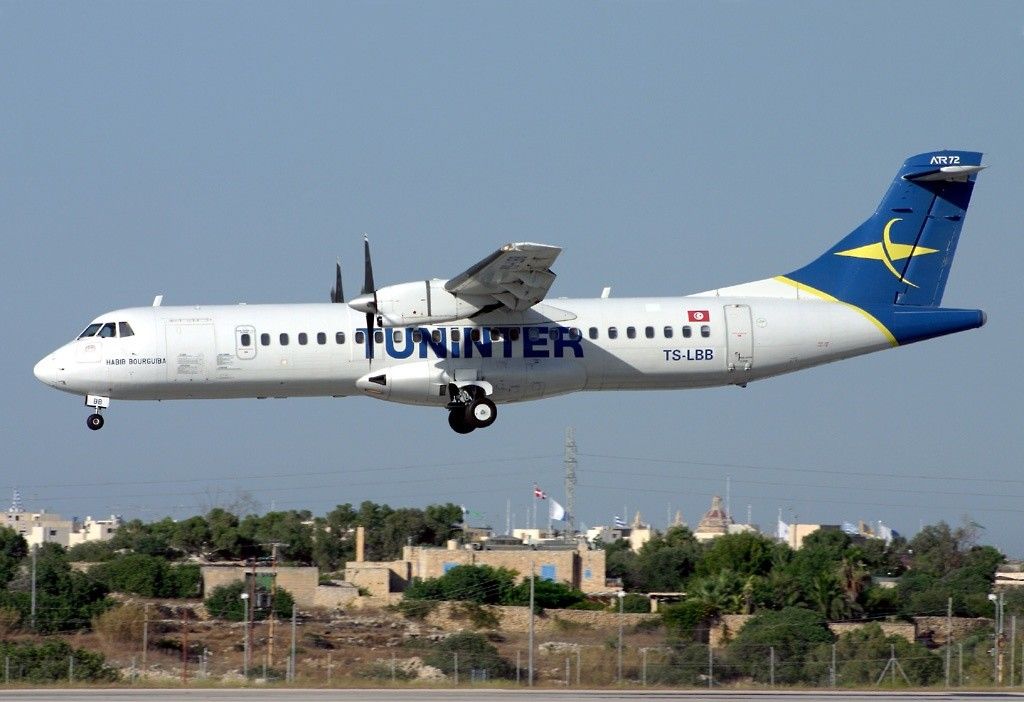Tuninter Flight 1153 was a regularly scheduled flight between Bari-Palese Airport (BRI) in Italy and Djerba-Melita Airport (DJE) in Tunisia on August 6, 2005. The aircraft operating the flight on the given day was a 14-year-old ATR 72–202 with the registration TS-LBB and the name Habib Bourguiba after a Tunisian lawyer and statesman.Piloting the plane was 45-year-old Captain Chafik Al Gharbi, a skilled and experienced pilot with a total of 7,182 flight hours, of which 5,582 were on the ATR-72. The first officer for the flight was 28-year-old Ali Kebaier Al-Aswad, with 2,431 flight hours, of which 2,130 were on the ATR-72..gif)
Mechanics installed the wrong fuel indicator
The night before the flight, the aircraft underwent maintenance and had its fuel quantity indicator (FQI) replaced. The mechanics performing the maintenance mistakenly installed an FQI designed for the ATR-42, a similar but smaller airplane with smaller fuel tanks.
Ground crews refueling the aircraft rely on the fuel readings to load the correct amount of fuel. The meters indicated that there was 3,050 kg of fuel onboard the aircraft when there was only 790 kg of fuel. When fuel was added for the flight from Tunisia to Italy, 465kg of fuel was added to a total of 1,255, yet the meters showed that the plane had 3,800 kg of fuel.
When the plane landed in Bari it had less fuel than indicated
When the plane landed in Bari, it had just 305 kg of fuel in the tanks. Usually, this would have triggered a low-level fuel warning light, but it did not because the fuel indicators read that the aircraft had 2,300 kg of fuel. Because of this, only 256 kg of fuel was added for the return flight to Tunisia. When the flight departed Bari, the fuel indicators said that the plane had 2,700 kg of fuel when in fact, it only had 570 kg.
On Saturday, August 6, 2005, while cruising above the Mediterranean Sea at 23,000 feet, the aircraft's right engine failed. As the plane began to descend, the left engine failed at 21,900 feet. The captain and first officer had no idea they were out of fuel as the fuel indicators showed that they had fuel still in the tanks.
Now trying desperately to restart the engines, the captain requested an emergency landing at Palermo Airport (PMO) on the island of Scilly. With no engines, the ATR-72 glided for 16 minutes but was far short of making it to the airport and ditched in the sea 26 miles northeast of Palermo.
Despite breaking into three sections, the plane floated for some time. Search and rescue teams arrived around 46 minutes after the crash and began the work of picking up survivors. Eight of the 39 passengers and crew died from the impact and another eight from drowning.
The investigation
It was quickly determined that the plane crashed due to fuel starvation in the engines. The cause of the starvation was the mechanic's mistake of installing fuel indicators made for an ATR-42 and not an ATR-72.
Investigators listed the following reasons as contributing factors in the crash:
- Errors by mechanics when searching for and fitting the fuel indicator.
- Errors committed by the flight crew with regard to operational procedures.
- Inadequate checks by the airline that the crew was respecting operating procedures.
- Inaccuracy of information entered into the aircraft management and spares information system.
- The lack of a trained and responsible person for overseeing the system.
- Unsatisfactory maintenance and organization of the airline.
- The lack of a quality assurance system.
- Inadequate surveillance of the airline by a competent Tunisian authority.
- The installation characteristics of the ATR-42 and ATR-72 made it possible to install the wrong fuel indicator in the aircraft.
Following the crash, Italy banned Tuninter from flying in Italian airspace. By 2007, Tuninter had rebranded as Sevenair and resumed flights between Italy and Tunisia. The airline again changed its name to Tunisair Express in 2011.


